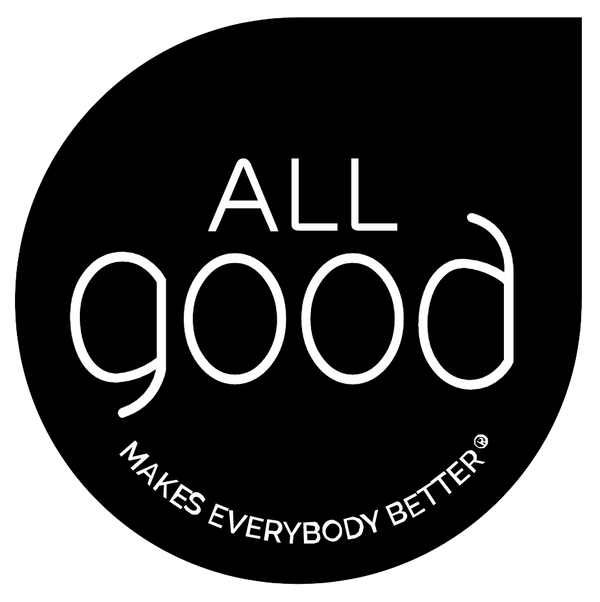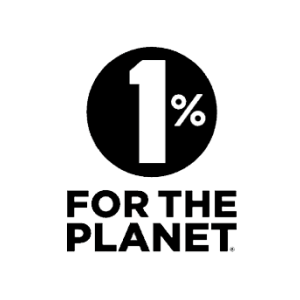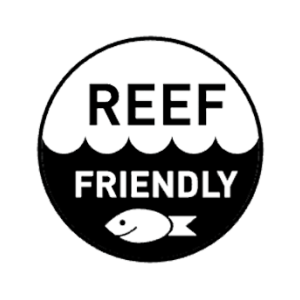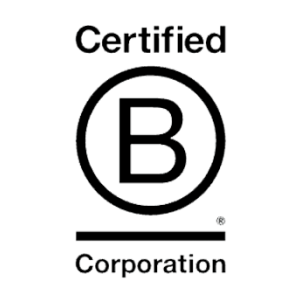Coral reefs are more than just a pretty face. They support an incredible underwater ecosystem and their very existence defends our coastlines against the worst effects of storms and hurricanes. Nature knows what’s up. Humans, on the other hand, do not. Climate change and human impact (like overfishing and chemical runoff) have accelerated coral bleaching, which leads to coral death. And more than 14,000 tons of sunscreen products reach and damage our coral reefs each year. That just doesn’t sit well with us.
In 2016, our founder, Caroline, got hip to the issue of coral bleaching from toxic sunscreen runoff in the ocean. She got to work searching for reef friendly alternatives and found there was a huge need for more credible, non-toxic suncare products.
To help preserve the coral that’s still alive, it’s critical that we all use sunscreen that meets reef friendly criteria. Not-so-fun fact: Most of the chemicals that are harmful to marine life are just as damaging to human health. So when you do right by your body, you do right by the ocean (and vice versa).
Reef Friendly Sunscreen Criteria
Reef friendly criteria is pretty simple if you’re paying attention: A sunscreen cannot contain any of the ingredients from “The Awful Eight.” No matter how many “good” ingredients are listed, if even ONE “awful” ingredient is listed it’s a toxic, non reef friendly sunscreen.
If you read something is “natural sunscreen” or “dermatologist-approved,” that doesn’t necessarily mean it’s reef-friendly. Some people flaunt their use of exotic, super-food ingredients (like green tea or beeswax) and claim to be “mineral-based sunscreens,” but there could be a lot of harmful ingredients mixed in that make it very unhealthy for reefs.
This is what we call “greenwashing” – companies that claim to be eco-friendly, but when you scratch below the surface you find the science doesn’t back up the claims. And just so we’re all clear, WE BELIEVE IN SCIENCE! (Alternative facts can go die a fiery death.)
So, what do any of these buzzwords actually mean? Are they really helping protect the oceans and reefs? What criteria do I need to look out for before purchasing my next sunscreen?

The Reef Safe Sunscreen Ingredients
Conventional chemical sunscreens contain a loooong list of ingredients that are harmful to coral reefs and the human body (we’ll get to that later). Luckily there are non-toxic alternatives and a few easy tricks for spotting the good stuff.
Look for unscented, oxybenzone-free, mineral-based sunscreens that use raw elements instead of synthetic ones and exclude ingredients that disrupt human hormone function or bleach coral (again, we’ll break that down later). The only way to really know is to read the labels and look for the toxic ingredients.
Our sunscreens offer the same broad spectrum protection (both UVA and UVB) as conventional sunscreens, without relying on toxic ingredients. We do this by avoiding the “Awful Eight” and using these two inredients instead:
Zinc Oxide
Zinc oxide is derived from the mineral zinc. In this form as zinc oxide, it’s able to block UV (especially UVA) rays just as effectively as any of the Awful Eight. Because it’s mineral-based, it won’t seep into your skin to risk your health, is less harmful to coral, and is not known to cause coral bleaching. With that said, avoid sunscreens with zinc oxide that are labeled as “clear zinc” or “transparent”. They’re likely to use zinc oxide nanoparticles (very very small-size particles of zinc oxide) to achieve this transparency, which scientists have found toxic to sea creatures and coral. Choose instead non-nano zinc sunscreens.
Titanium Dioxide
Like zinc oxide, sunscreens that contain titanium dioxide are mineral-based. Titanium dioxide is a great alternative to the problematic oxybenzone and octinoxate common in most sunblock creams. It provides effective protection against UV rays (especially UVB). Sunscreens created with both zinc oxide and titanium dioxide can offer broad spectrum protection against both UVA and UVB rays. However, make sure that the titanium dioxide in your sunscreen is non-nano. Like zinc oxide, titanium dioxide nanoparticles can clog coral when ingested and lead to coral bleaching.
Bad and Toxic Sunscreen Ingredients, aka: “The Awful Eight”
The compounds in these ingredients, preservatives, and additives are toxic to humans and coral reefs. If any one of these ingredients is listed in a sunscreen, it is NOT considered reef safe.
Oxybenzone
Although approved by the Food and Drug Administration (FDA) and naturally occurring in land plants and flowers, oxybenzone is a substance that is foreign and almost completely unnecessary to the marine environments. Yet, tons of it are accumulating in our coral reefs every year.
As a result, oxybenzone dramatically weakens already-fragile coral-based ecosystems by speeding up coral bleaching and death. Studies further show that this chemical not only kills adult coral but also damages DNA in young coral, severely affecting their development and lifespan.
The damage that oxybenzone can have on coral is so bad, in fact Hawaii, Palau, Key West, the US Virgin Islands, and more have banned or are in the process of banning sunscreens containing oxybenzone, along with the second-most commonly found toxic sunscreen chemical: octinoxate.
Octinoxate
Similar to oxybenzone above, Octinoxate — also referred to as Octyl methoxycinnamate (OMC) on labels — is a UV-filtering chemical that is popular in conventional sunblock lotions. It’s absorbed quickly and effectively through the skin.
Unfortunately, it also causes endocrine disruption. Once in the human body, octinoxate mimics the hormone estrogen and can lead to health issues like thyroid function complication and cardiovascular disease. Its effects on marine wildlife are even more toxic — studies have shown that octinoxate negatively impacts the healthy development and reproductive functions of fish and non-fish animals in the oceans. It also induces coral bleaching.
Octocrylene
Octocrylene is another very common ingredient that has been shown to have toxic impact on coral reefs. Scientists found that this chemical can accumulate over time in coral tissue as fatty acids and impair the normal functioning and metabolism of corals.
Similar to octinoxate, octocrylene penetrates human skin and can also trigger harmful reactions in cells that may lead to cardiovascular disease.
PABA (Aminobenzoic Acid)
Aminobenzoic Acid —also known as Para-Aminobenzoic Acid or PABA —is an organic compound naturally found in grains, eggs, milk, and meat. After discovering its UV-blocking properties, manufacturers started using it in sunscreens.
While it’s considered non-toxic to humans up to a dose of 2g per kg, the Haeriticus Environmental Laboratory (HEL) has included it in its list of reef-harmful substances, indicating that PABA is nonetheless damaging to coral reefs. Therefore, it’s best to be wary of any sunscreen or skincare product that contains it as an ingredient.
Enzacamene
Enzacamene, also known as 4-methyl-benzylidene, is another common, popular ingredient in conventional sunscreen creams and cosmetics. Enzacamene is an endocrine disruptor that mimics estrogen in the human body and disrupts the thyroid and reproductive organ function. It is also non-biodegradable. Like other endocrine-disrupting ingredients on this list, enzacamene has a devastating effect on coral, triggering bleaching and eventually death.
Octisalate
Octisalate is a colorless liquid that absorbs UV rays and makes sunscreens water-resistant. However, it also enhances skin’s permeability, meaning that if the sunscreen you use has other harmful ingredients, Octisalate makes it easier for them to enter your body. Certain studies show that it can have a negative impact on your immune system and trigger allergies. Several countries like Japan and Canada already recognize it as an environmental toxin.
Homosalate
Widely used in products containing “SPF” — so, common sunscreens and SPF-enhanced cosmetics – homosalate is a UV absorber that helps sunscreen ingredients penetrate your skin. There is evidence suggesting homosalate disrupts estrogen, androgen, and progesterone hormone function. It mimics estrogen in the body, making your body react like it has an excess of estrogen in its system. That, consequently, can lead to breast cancer, among other health issues, and contaminate breast milk.
Avobenzone
If you have sensitive skin, this is an ingredient you especially want to avoid. Avobenzone is a UV-ray blocker that is sometimes used in place of Oxybenzone, but that doesn’t mean that it’s safer. Like Oxybenzone, it penetrates the skin, allowing other chemicals in the sunscreen to follow suit, and can cause skin allergies because it breaks down in the sun. Recent studies found that Avobenzone can become toxic to our liver and kidneys if it comes into contact with chlorine, which is a common ingredient in swimming pool and tap water.
The Toxic Sunscreen Preservatives and Additives
Parabens
Parabens are a class of preservatives commonly used in cosmetics and pharmaceutical products, including many sunscreen products, to prevent them from spoiling. The most common parabens are propylparaben, benzylparaben, methylparaben, and butylparaben. This list is known to mimic the hormone estrogen in the human body and increase risk of breast cancer and health issues related to the reproductive system. Parabens are also toxic to coral reefs and ocean life: they kill valuable ocean microbes and damage fish nervous systems.
Phthalates
Phthalates are often included in sunscreens as a synthetic fragrance. High levels or continued exposure to phthalates negatively impact testosterone development and can even interfere with everyday brain function. There is mounting evidence that phthalate effects are similarly harmful on coral reefs, contributing to bleaching if corals ingest them. Make sure to be on the lookout for labels claiming “natural” scents or fragrances or essential oils.
Triclosan
Sometimes abbreviated as just TCS, Triclosan is an anti-bacterial and anti-fungal ingredient that was commonly used in antibacterial soaps, but the FDA has banned it in soaps and wash products. Oddly, it can still make an appearance in sunscreens (cue our raised eyebrows). It’s an endocrine disruptor like many of the other chemicals in this list. Therefore, it can increase breast and other cancer risks if exposure to it happens over a long period of time. Toxic to animals, including marine life, it has been shown to cause developmental damage to the reproductive capacity of fish.
Microbeads (plastic)
Microbeads are tiny plastic beads, usually no more than 5mm in diameter, that are often added to personal care and cosmetic products like soaps for their exfoliating power. They don’t dissolve or degrade in water. They’re less likely to be in sunscreen, but it’s still good to check just in case, because most water treatment systems can’t catch these beads. Once microbeads enter streams and rivers (typically after washing down shower or bath drains) they can end up in the ocean, where unsuspecting coral might ingest them thinking that they’re plankton. This can effectively starve the coral to death. Microbeads have also been found in fish and other marine animals.
So, What Can You Do? Take the #ReefFriendly Pledge
What’s good for the reefs is good for the gander. Join us in pledging to take care of yourself and the environment by buying reef-friendly sunscreen lotion and cosmetic products, like the ones here at All Good Products. Whether you’re looking for reef-friendly lip balm or body butter, sport sunscreen or sunscreen for the beach, it’s All Good. We’ve got you and your commitment to our precious coral reefs covered!

References and light reading:
https://www.huffpost.com/entry/oxybenzone-chemical-sunscreen_n_5aeb38b0e4b0c4f1931ffce0
http://www.safecosmetics.org/get-the-facts/chemicals-of-concern/octinoxate/
http://haereticus-lab.org/octinoxate/
http://haereticus-lab.org/protect-land-sea-certification/#link-target1/
https://www.webmd.com/vitamins/ai/ingredientmono-1004/para-aminobenzoic-acid-paba
https://www.ewg.org/skindeep/ingredient/704204/OCTISALATE/
https://www.sciencedaily.com/releases/2019/01/190109110048.htm
https://www.ewg.org/skindeep/ingredient/704206/OCTOCRYLENE/
https://www.ewg.org/sunscreen/report/the-trouble-with-sunscreen-chemicals/
http://www.safecosmetics.org/get-the-facts/chemicals-of-concern/homosalate/
http://www.ewg.org/skindeep/ingredient/700596/avobenzone/
https://www.oceanfdn.org/blog/your-sunscreen-killing-coral-reefs
https://www.sciencedirect.com/science/article/pii/S0025326X19302279
https://en.wikipedia.org/wiki/Triclosan#Health_concerns
https://www.webmd.com/a-to-z-guides/features/what-is-triclosan#2
https://www.huffpost.com/entry/microbeads-coral-study-plastic-face-wash_n_6788522
https://draxe.com/health/skin-and-hair-health/zinc-oxide-benefits/






